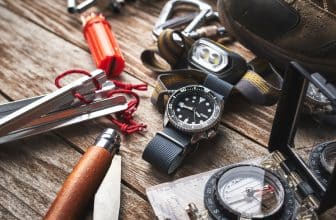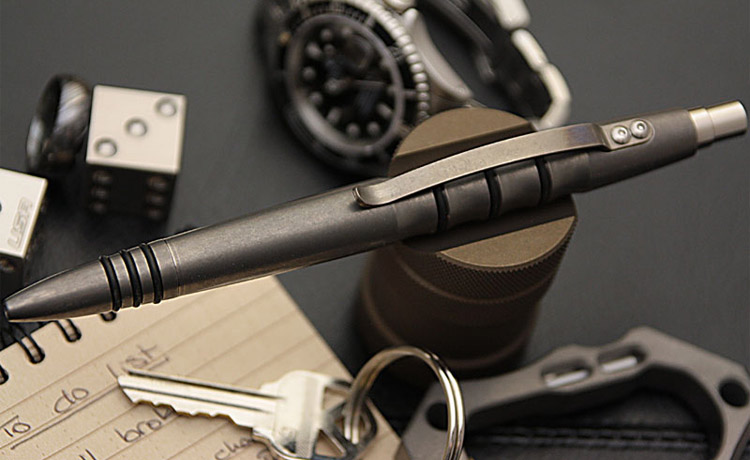
In this article, we will talk about how to take care of your night vision equipment. But, first, let us answer this relevant question; “how does night vision work”. The answer is that it depends on the tools you are using. There are two kinds of technology applied in night vision equipment. They are thermal imaging and image enhancement. As the name implies, thermal imaging technology involves heat while image enhancement brightens the existing light. Now, let us discuss the main reason for this article. It is important to maintain your Night Vision Equipment as it will deliver optimal results. If you own any of these tools; a night vision scope, a thermal scope, or a set of night vision goggles, then you are sure of two things:
- These devices are very expensive
- Your night vision tool gives you an undue advantage for security, hunting, etc.
To enjoy these devices, you need to protect and care for them when they are not in use.
Here are some guidelines you can follow to maintain optimal performance thereby prolonging the lifespan of your night vision equipment.
Page Contents
Adhere to Instructions
The parts that make up these night vision devices are very fragile. Even a little scratch can render the devices useless. Besides damaging the equipment, it may jeopardize the lives of the user as well as others present in the area if you are using thermal riflescopes or night vision scopes. To avoid such kind of mistakes, it is vital to follow the instructions as illustrated in the operator manual.
Humidity and Fog
Rain will damage devices, but, hope you are aware that high humidity and fog can damage some devices too. As applicable to the majority of electronic devices, night vision devices are vulnerable to water thereby requiring some level of protection. Some night vision equipment is particularly susceptible to fog.
Wet Batteries
You don’t consider this but replacing batteries in a wet environment can weaken the weather-proof layer on many regular devices. Some devices only come with seals for the battery compartment and that is the only protection for it. Ensure that your batteries are kept in a weatherproof case as it will protect your battery when you go to replace them.
Impact
Night vision devices are essentially made for night purposes, so their construction is typically robust. However, this does not validate you to beat them up. Sensitive parts have to be protected by using materials that soak up the impact of the equipment falls. Always use mounts, hand straps, and handles appropriately and mount them on areas that are set up for it, like helmet mounts or weaver rails.
Bright Light
Most of the lower part of the night vision equipment is damaged by bright light. That is the reason many practical users will not put on their goggles during the day time. Some even say that you should always protect your equipment from sunlight exposure. Light can damage devices depending on their intensity, source, and level of exposure.
Cleaning your devices
Always follow instructions on the manual when cleaning your equipment as the majority of these devices get damaged during the cleaning process. It is unwise to use the abrasives and detergents as this is highly discouraged. You can use a damp rag to clean the outer part of the devices.
Storage
If you don’t plan to use the devices for some time, it is better to eject the battery. Store these devices in the condition as stated in the user manual. Switch off the device or close the aperture whenever you are not using it to increase the lifespan of your tube.
Do you know which type of night vision equipment you need?
Whether you plan to use night vision equipment for hunting, fishing, on the battlefield, etc., you should know that there are several types of night vision equipment. Details come next:

Night vision monoculars
The monocular is a single-eye unit with no magnification. Monoculars of good quality are the most versatile type of night vision equipment. They have a compact size and light build, which recommends head set up.
High-generation monoculars allow attachment to the spotting scopes and rifle scopes or even right onto a weapon. You can install new generation monoculars onto a weapon in front of a red dot sight with night vision compatibility. Many of them can be adjusted to set them up to a camera for photography; you will need to use a camera adapter. Such models are small and light enough to carry in a pocket.
The benefits of monoculars are that you can easily switch from your eyes when you get tired so that eyes maintain the night adaptation and some of the peripheral vision. The downside is that the monoculars don’t feel natural and require some time to get used to. If you use a monocular, you have to get used to keeping your eyes open.
All in all, the monoculars are the most versatile options within the night vision equipment. They can help you in many and various activities and come with many features (manual gain control is essential).
Night vision goggles
The night vision goggles will allow both eye viewing and allow head installation. They don’t have magnification and feel very natural. You can choose between two types of goggles:
- Two eyepieces that view through an image tube
- Two eyepieces that view through dual image tubes (stereovision).
You can use the night vision goggles for navigation while driving and walking. The dual-tube goggles give “stereo vision,” so every eye views an image different from the other. The stereo vision ensures the dual tube goggles’ efficient depth perception to enhance the navigation ability.
The goggles are rather heavyweight and not as versatile as the monocular. They surpass the monocular in terms of depth perception because every eye sees different images (slightly, though), which helps with distance estimation. The depth perception is helpful for navigation, no matter if you walk through a field, drive your boat, etc.
The main drawback with goggles is the weight and limited versatility. When you set up the goggles on your head, you will feel the extra weight and the unit might ride below your eyes when moving. Needless to say, you will get tired from the excess weight. Remember that goggles don’t allow setup on rifles. You can install them on rifle scopes and cameras, but the results are somewhat limited.
Googles are great at short-duration navigation and stationary observation activities. If you need to do a lot of physical exercises, you should look for lighter options.
Night vision binoculars
The night vision binoculars have two eyepieces and have magnification. They’reThey’re heavy, so they cannot be installed on your head. The magnification zooms a lot and it will be tricky to navigate with them due to the heavy weight. You can find devices mainly made to magnify images at long distances while you stand without moving too much.
If you are involved in an activity requiring stationary and need viewing at long range, you should opt for night vision binoculars. Remember that the more magnified you want, the dimmer the image will become because you lose the light. Adding magnification to a unit will reduce the magnification benefits. A reliable Gen3 device will provide you with magnification and good light too.
The most crucial downside with binoculars comes from the fixed magnification. Therefore, the binoculars are always “zoomed in.” If you want to navigate with them or take a closer look in the field of view, it will be a struggle since close objects will seem very large.
All in all, if you look for maximum distance and close-in viewing, binoculars make for the best choice.

Night vision scopes
There are two kinds of night vision scopes to choose from: the regular rifle scope and the scope you attach/install in front of a rifle scope.
The regular rifle scope is large, heavy, and commonly known as the weapon sight. The second type of scopes is known as day/night systems because you can actually remove them and use them like regular scopes during the day. Even if the day/night systems are excellent and versatile, many prefer the scopes made especially for night vision.
If you don’t want to use the night/day vision scopes, you can set up a monocular to the eyepiece of your rifle scope with a day/night adapter. Another option is to install the monocular right to the rifle in front of the red dot sight – it has to be night vision compatible. You can remove the monocular and use it in various tasks: navigating scouting. Etc. You might not enjoy a similar scope performance, though.
For range night hunting, we recommend you get a night scope. However, if you want to develop several activities with just one device, a good-quality monocular will be a reliable choice.
Day/night systems
The day/night system is a device you can attach to the objective and not the eyepiece of the regular daylight scope. You can also install it to the rifle, right in front of the objective of the daylight scope. The day/night systems offer light amplification and use the daytime scope’s reticle and magnification for aiming. You can use the optic for various tactical activities after the sun goes down. It’sIt’s also relatively straightforward to attach the day/night unit to the scope’sscope’s front for use.
Because of the compact size, small shape, and complex lens system, the day/night system doesn’t collect as much light as specialized night scopes. They can represent a reliable alternative when you cannot buy a dedicated model.
Should you look for both night and day ability and don’t have the budget for two rifles, we recommend buying a good day/night system. Such systems give the best performance when used with a high-quality daytime scope to collect as much light as possible. You can find many “day/night” kits that also contain high-quality daytime scopes.








